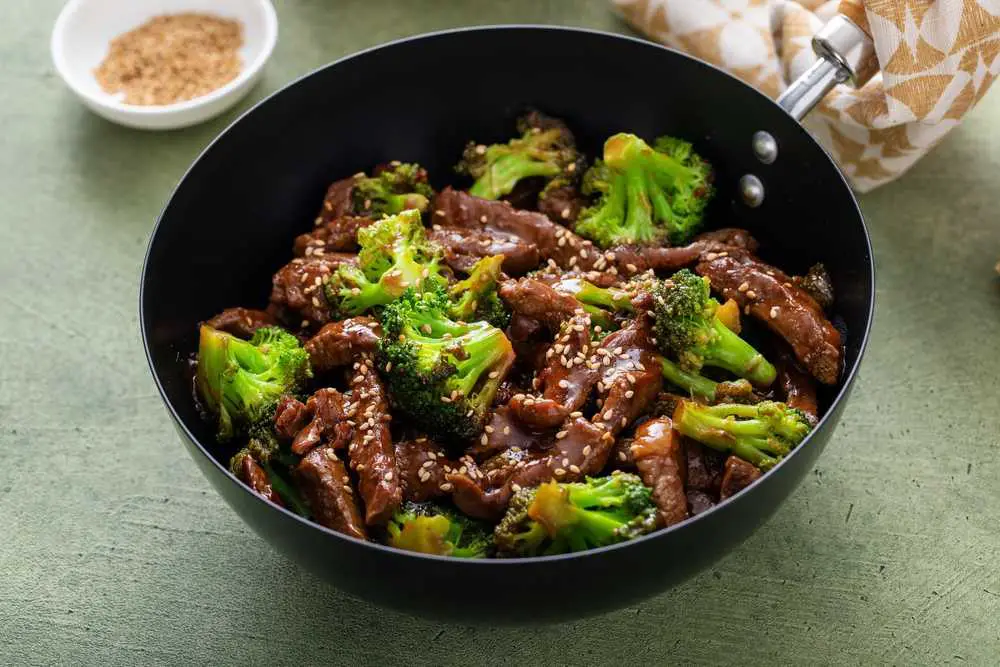When it comes to comfort food, few dishes rival the heartiness and warmth of a well-prepared beef stew. This classic dish, brimming with tender chunks of beef, flavorful vegetables, and rich, savory broth, is perfect for cozy dinners and satisfying meals. Here’s a foolproof recipe to make the most delicious boneless beef stew meat you’ll ever taste.
Ingredients:
2 pounds boneless beef stew meat (chuck or round cuts work best)
3 tablespoons olive oil
1 large onion, chopped
3 cloves garlic, minced
4 cups beef broth
1 cup red wine (optional, for extra depth of flavor)
2 tablespoons tomato paste
2 teaspoons Worcestershire sauce
1 teaspoon dried thyme
1 teaspoon dried rosemary
3 large carrots, peeled and cut into chunks
4 large potatoes, peeled and cubed
2 celery stalks, chopped
1 cup frozen peas
Salt and pepper to taste
2 tablespoons all-purpose flour (optional, for thickening)
Fresh parsley, chopped (for garnish)
Instructions:
Prepare the Meat:
Start by patting the beef stew meat dry with paper towels. This ensures a good sear. Season the meat generously with salt and pepper.
Sear the Beef:
Heat 2 tablespoons of olive oil in a large, heavy-bottomed pot or Dutch oven over medium-high heat. Add the beef in batches, making sure not to overcrowd the pan. Sear until the pieces are browned on all sides, about 4-5 minutes per batch. Transfer the seared beef to a plate and set aside.
Sauté the Aromatics:
In the same pot, add the remaining tablespoon of olive oil. Add the chopped onion and cook until it begins to soften, about 5 minutes. Add the minced garlic and cook for another minute, until fragrant.
Build the Base:
Stir in the tomato paste and cook for 2 minutes. This will caramelize the paste and enhance its flavor. Pour in the red wine (if using), scraping up any browned bits from the bottom of the pot. Let it simmer for a few minutes until the wine reduces by half.
Add the Liquid and Seasonings:
Return the seared beef to the pot. Pour in the beef broth, ensuring the meat is fully submerged.
Stir in the Worcestershire sauce, thyme, and rosemary. Bring the mixture to a boil, then reduce the heat to low and let it simmer, covered, for 1 hour.
Add the Vegetables:
After an hour, add the carrots, potatoes, and celery to the pot. Continue to simmer, covered, for another 45 minutes to an hour, or until the vegetables and beef are tender.
Thicken the Stew (Optional):
If you prefer a thicker stew, mix 2 tablespoons of all-purpose flour with a bit of water to create a slurry. Stir this into the stew and let it cook for an additional 10 minutes to thicken.
Finish the Stew:
Stir in the frozen peas and cook for a few more minutes until they are heated through. Adjust the seasoning with additional salt and pepper if needed.
Serve and Enjoy:
Ladle the stew into bowls and garnish with chopped fresh parsley. Serve with crusty bread for dipping.
Tips for the Best Beef Stew:
Choose the Right Cut: Opt for cuts like chuck or round, which become tender and flavorful with slow cooking.
Take Your Time: Don’t rush the searing process. Browning the meat adds depth to the stew.
Layer the Flavors: Each step, from searing the meat to sautéing the aromatics, builds a complex, rich flavor profile.
Customize Your Veggies: Feel free to add other vegetables like mushrooms, parsnips, or turnips based on your preference.
This boneless beef stew meat recipe is not just a meal; it’s an experience. The tender beef, savory broth, and hearty vegetables make for a dish that’s both comforting and satisfying.
Whether you’re cooking for family, friends, or just yourself, this stew is sure to warm both body and soul.
Storing and Reheating Tips
One of the best things about beef stew is that it often tastes even better the next day as the flavors continue to meld. Here are some tips for storing and reheating your stew:
Storing:
Refrigeration: Let the stew cool to room temperature before transferring it to airtight containers. It can be stored in the refrigerator for up to 3-4 days.
Freezing: If you plan to store the stew for longer, freeze it. Transfer the cooled stew to freezer-safe containers or heavy-duty freezer bags. It can be frozen for up to 3 months. Remember to leave some space in the containers as the stew will expand when frozen.
Reheating:
On the Stovetop: Reheat the stew in a pot over medium-low heat. Stir occasionally to ensure even heating. If the stew is too thick, add a bit of water or beef broth to reach the desired consistency.
In the Microwave: Place a portion of the stew in a microwave-safe dish, cover it with a microwave-safe lid or plastic wrap (leaving a small opening for steam to escape), and heat on medium power, stirring every minute or so until warmed through.
From Frozen: If reheating from frozen, it’s best to thaw the stew in the refrigerator overnight before reheating it on the stovetop or in the microwave. However, you can reheat it directly from frozen on the stovetop over low heat, adding a bit of water or broth to prevent sticking.
Variations and Additions
To keep your beef stew exciting and cater to different tastes, consider these variations and additions:
Herbs and Spices: Experiment with different herbs and spices like bay leaves, oregano, or paprika for varied flavor profiles.
Vegetables: Incorporate a wider range of vegetables such as sweet potatoes, parsnips, or bell peppers. Leafy greens like kale or spinach can be added in the last few minutes of cooking.
Beans and Lentils: Adding beans or lentils can make the stew heartier and increase its nutritional value.
Grains: Serve the stew over cooked grains like rice, quinoa, or barley for a complete meal.
Coconut Milk: For a unique twist, add a can of coconut milk and a touch of curry powder to create a creamy and slightly exotic stew.
Serving Suggestions
Beef stew is a versatile dish that can be served in various ways:
Classic: Serve the stew with a side of crusty bread or garlic bread to soak up the delicious broth.
Over Grains: Spoon the stew over a bed of rice, quinoa, or mashed potatoes for a hearty and satisfying meal.
With a Salad: Pair the stew with a fresh green salad for a balanced meal.
In a Bread Bowl: For a fun and rustic presentation, serve the stew in a hollowed-out bread bowl.
Nutritional Benefits
Beef stew is not only delicious but also packed with nutrients:
Protein: The beef provides a rich source of protein, essential for muscle repair and growth.
Vitamins and Minerals: The vegetables add a variety of vitamins and minerals, including vitamin A, vitamin C, potassium, and fiber.
Hydration: The broth helps keep you hydrated and can be especially comforting on cold days or when you’re feeling under the weather.
This boneless beef stew meat recipe is a timeless classic that brings comfort and nourishment to any table. Whether you’re cooking for a family dinner, a gathering with friends, or simply seeking a warming meal, this stew is sure to impress with its rich flavors and tender, melt-in-your-mouth beef. Enjoy the process of making it as much as you enjoy eating it, and feel free to customize it to suit your taste.


















